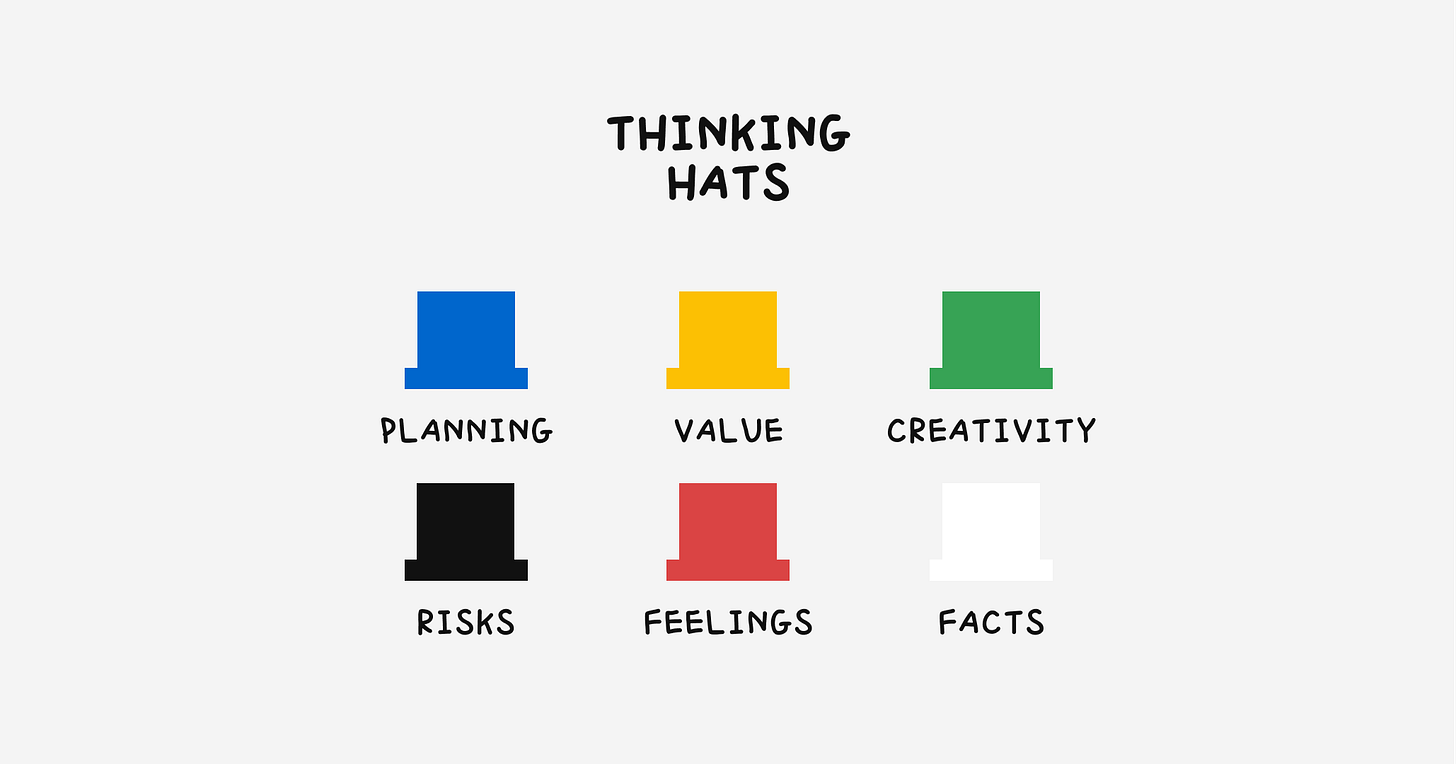Thinking Hats:
Developed by Dr. Edward de Bono, this is a problem-solving technique that helps individuals and teams approach problems from various perspectives, fostering creativity and reducing conflict.
By "wearing" different hats, participants can explore ideas systematically and make more informed decisions - reducing the reliance on dynamic lateral thinking.
Blue Hat
Focuses on managing the thinking process, setting goals, and defining the problem.
Sample questions:
- What needs to be resolved?
- What is the agenda?
Yellow Hat
Looks at the positive aspects and potential benefits of ideas.
Sample questions:
- What are the benefits?
- How does this idea contribute to success?
Green Hat
Encourages creativity and the generation of new ideas.
Sample questions:
- What new ideas can we explore?
- What are the alternatives?
Black Hat
Provides a critical perspective, identifying risks and potential problems.
Sample questions:
- What are the possible risks?
- What could go wrong?
Red Hat
Allows the expression of emotions and instincts without justification.
Sample questions:
- How do we feel about this idea?
- What is our gut reaction?
White Hat
Concentrates on gathering facts and information.
Sample questions:
- What data is available?
- What information is missing?
The ‘thinking hats’ method enhances decision-making, encourages creativity, and fosters a collaborative environment — making it a valuable tool for both teams and individuals.
Here’s a quick link to share this post with a friend or colleague:
Have you used this method before? Did you find it useful?
Keen to hear personal experiences from this.
Remember to leave your thoughts in the replies using the buttons below — and consider upgrading your subscription to access my past and future illustrated book summaries.




I did use this in the past, it was very useful, especially to help bring up problem (black hat). Not everyone feel comfortable being the one to point a bad aspects of an idea, so being assigned that role makes it easier.
By the way the white hat (Facts) seems to fade a bit with the background, wondering if it is a social commentary 😄
This concept needs to be a Pixar short, akin to Inside Out